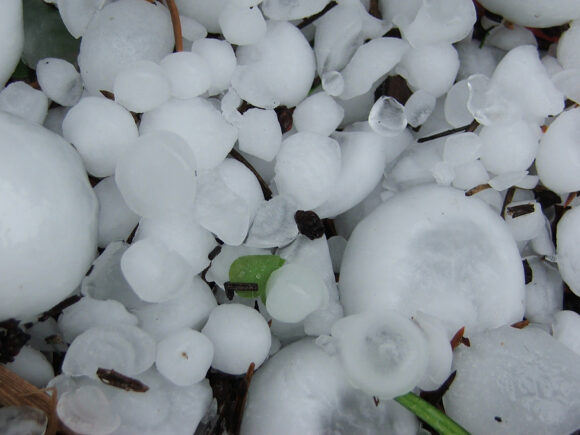A severe convective storm system spawned softball-sized hail and destructive tornadoes across the central U.S. last week, leaving meteorologists to speculate if warmer winter weather is behind the storm outbreak.
As parts of the Midwest recover from the March 13-14 storms, CoreLogic has released an initial estimate of the number of residential properties hit by hail: 650,000.
“The hail impacts in Kansas and Missouri on March 13 were worse than any single day in 2023”, wrote Jon Schneyer, CoreLogic’s director of catastrophe response.
Hail of 1″-2″ fell on more than 100,000 Missouri properties and 43,000 Kansas properties on March 13, according to CoreLogic estimates. Another 9,600 Kansas properties received hail of 2″-3″.
Is Industry Prepared? Hail, Convective Storms, Population Now Driving Billions in Losses
Johnson County, Kansas, just west of Kansas City, had nearly 1,800 homes that received hail of greater than three inches. Hail of this size can cause extensive roof damage, including entire replacement, CoreLogic said.
March 14 brought even more hail over the central states. More than 436,000 properties that day received hail, with the most occurring in Missouri (129,000), Texas (103,000), Illinois (66,000) and Indiana (53,000).
The St. Louis region was hit particularly hard. Saint Charles County had more than 1,200 properties receive hail of three inches or greater.
CoreLogic said it is too early to predict whether 2024 hail storms will match or top 2023, which saw 141 days of hail two inches or greater strike the U.S.
That’s Gonna Leave a Mark: Large-Hail Days Hit Two-Decade High in 2023
Severe convective storms in 2023 created an “unprecedented amount of insured loss on par with a single major hurricane,” CoreLogic said in a February report.
“It is imperative that insurers understand and quantify their portfolio’s severe convective storm risk in order to avoid high catastrophe losses by year-end in 2024,” wrote Schneyer. “If this year is to repeat 2023 and a major hurricane was to make landfall in the U.S., insured losses could be catastrophic.”
Was this article valuable?
Here are more articles you may enjoy.


 Florida And East Coast Will See Big Losses From More Cat 5 Storms, Researchers Say
Florida And East Coast Will See Big Losses From More Cat 5 Storms, Researchers Say  Losses Top $20 Billion in Asia Floods as Climate Risks Grow
Losses Top $20 Billion in Asia Floods as Climate Risks Grow  California Again Delays Wildfire Protection Rules for Homes
California Again Delays Wildfire Protection Rules for Homes  Abbott Presses Congress for Shield Over Preemie Baby Formula Litigation That Could Cost It Billions
Abbott Presses Congress for Shield Over Preemie Baby Formula Litigation That Could Cost It Billions 